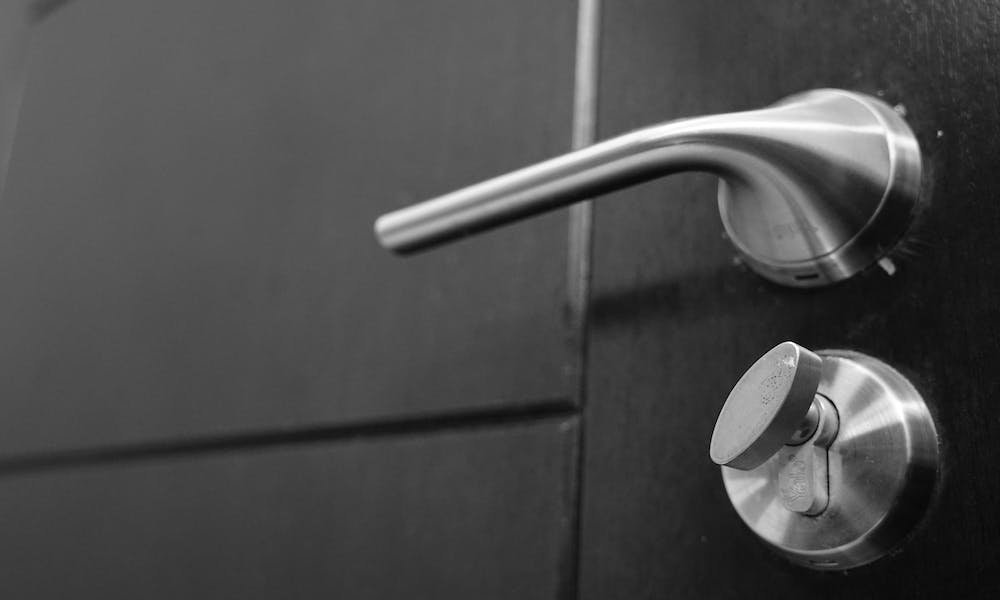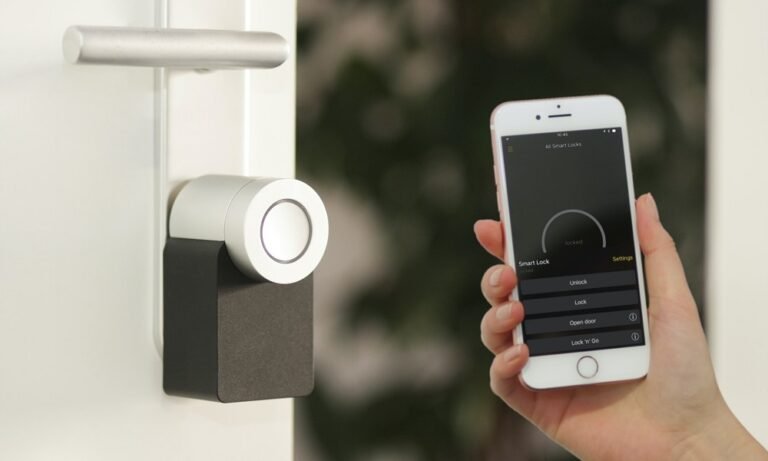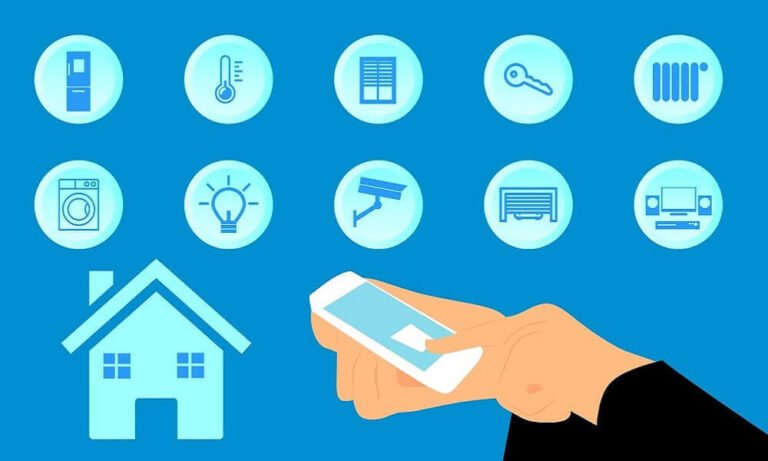Do you want to learn how to keep your home secure? If your answer to this question is yes, then you’re in the right place.
Introduction
Your home is your sanctuary, a place where you and your loved ones should feel safe and protected. However, in today’s world, security concerns are more prevalent than ever.
Ensuring the safety of your home and family is of paramount importance.
In this comprehensive guide, we will explore various strategies and tips to help you keep your home secure. From basic principles to advanced technologies, we’ve got you covered.
Table of Contents
Assessing Your Home’s Vulnerabilities
Before you can secure your home, it’s essential to assess its vulnerabilities. Start by evaluating your home from a burglar’s perspective. What are the weak points, and where could an intruder potentially gain access? Here are some key areas to consider:
Entry Points:
The entry points of your home are its first line of defense against potential intruders. They serve as gateways that can either be a secure barrier or a weak point, depending on how well you’ve fortified them.
To ensure the safety of your home, it’s crucial to meticulously inspect and strengthen these entry points.
Check all doors, windows, and other entry points. Are they sturdy and secure, or could they be easily forced open? Consider upgrading to solid doors and reinforced window locks.
By focusing on these aspects of entry points, you can significantly improve the security of your home, making it more challenging for potential intruders to gain access.
Remember that the strength of your home’s defenses begins at its entry points, so invest the time and resources to make them as secure as possible.
Landscaping:
Your home’s surroundings play a pivotal role in its security. Landscaping is not just about aesthetics; it can significantly impact the safety of your property.
Careful attention to landscaping can help deter potential intruders and create a more secure environment.
Overgrown bushes or trees can provide cover for intruders. Keep your landscaping well-maintained to eliminate potential hiding spots.
By paying attention to landscaping, you not only enhance the beauty of your property but also bolster its security.
A well-maintained landscape can deter intruders, improve visibility, and contribute to a safer and more secure home environment.
Lighting:
Effective outdoor lighting is a critical component of your home’s security strategy. Well-planned and strategically positioned lights can act as a deterrent to potential intruders, making your property less inviting as a target.
By paying attention to your lighting strategy, you can significantly improve the security of your home.
Adequate and strategically placed lighting not only makes your property less appealing to potential intruders but also provides you with peace of mind, knowing that you’ve taken steps to enhance the safety of your surroundings.
Visibility:
The visibility of your home from the street and neighboring properties is a crucial factor in enhancing its security.
An obscured home can provide cover for potential intruders, while a well-exposed property can act as a natural deterrent.
If you focus on enhancing the visibility of your home, you not only reduce the risk of break-ins but also contribute to the overall safety of your neighborhood.
An open and well-lit environment, combined with the watchful eyes of neighbors, can create a strong deterrent against potential intruders and foster a sense of community security.
Alarm System:
Modern alarm systems are the digital sentinels that provide an additional layer of protection for your home.
These systems are a vital component of your security strategy, offering both active deterrence and rapid response capabilities.
By investing in a reliable alarm system, you’re equipping your home with a digital sentry that not only deters potential intruders but also provides you with peace of mind.
If you already have an alarm system or security cameras, assess their functionality and coverage. Consider upgrading or expanding your system as needed.
The combination of comprehensive sensors, central monitoring, audible deterrence, and remote-control capabilities ensures that your home is safeguarded around the clock, enhancing the security of your property and the safety of your loved ones.
Neighborhood:
The neighborhood in which your home is situated plays a crucial role in your overall security. A strong, connected community can be a formidable barrier against potential threats and a source of support in times of need.
Your active participation in your neighborhood and working together with your neighbors, you can collectively strengthen the safety of your community.
A strong sense of community not only deters potential threats but also provides you with a support system that can be invaluable in times of need.
Research the safety of your neighborhood. If there have been recent incidents, be extra vigilant.
Building a shield of safety together ensures a more secure and harmonious living environment for all residents.
Social Media:
In the digital age, the information we share on social media can impact the security of our homes. While social platforms connect us with friends and family, they can also inadvertently provide valuable insights to potential intruders.
Understanding how to use social media responsibly and safely is an essential part of your home security strategy.
By being mindful of your social media presence and practicing responsible online behavior, you can significantly reduce the risk of inadvertently providing information to potential intruders.
Remember, the digital footprint you create can have real-world implications for your home’s security, so use social media wisely and protect your personal information.
Strengthening Physical Security
Now that you’ve identified the vulnerabilities, it’s time to take steps to strengthen your home’s physical security. These measures will make it harder for intruders to break in:
Reinforce Doors:
Now that you’ve identified the vulnerabilities, it’s time to take steps to strengthen your home’s physical security. These measures will make it harder for intruders to break in:
Reinforce Doors:
Doors are not just the entry points to your home; they are the first line of defense against potential intruders. Reinforcing your doors is a fundamental aspect of home security, enhancing your overall safety.
Install solid core or metal doors with deadbolt locks. Reinforce door frames to prevent kick-ins.
By focusing on door reinforcement, you fortify your home’s primary entry points, making it significantly more challenging for potential intruders to gain access.
The strength of your doors and their associated security features sets the tone for your home’s overall security, providing you with peace of mind and a robust first line of defense.
Upgrade Windows:
Windows are not just sources of natural light and ventilation; they can also be potential vulnerabilities in your home’s security.
Upgrading your windows is a significant step in fortifying your home against intruders and enhancing overall safety.
Use laminated or tempered glass for windows, and install window locks or security film to make it more difficult to break them.
By upgrading your windows with a combination of these security measures, you significantly enhance your home’s protection.
Windows can be a weak point, but with proper upgrades, they become an integral part of your home’s defense against potential intruders, providing you with peace of mind and a safer living environment.
Secure Sliding Doors:
Sliding glass doors offer an elegant and functional way to connect your indoor and outdoor spaces, but they can also be vulnerable entry points for intruders.
Strengthening and securing sliding doors is essential to maintain the security of your home while preserving their aesthetic appeal.
Place a bar or rod in the track of sliding glass doors to prevent them from being forced open.
By implementing these security measures, you can secure your sliding doors effectively, ensuring they remain an elegant and safe element of your home.
Properly secured sliding doors deter potential intruders and contribute to a more secure and serene living environment.
Security Bars:
Consider adding security bars to basement or ground-level windows.
Outdoor Cameras:
Install outdoor security cameras at strategic locations, providing a visible deterrent and a way to monitor your property.
Motion Sensor Lights:
Install motion-activated lights near entryways and in dark areas around your home.
Safes:
Keep valuable items, important documents, and firearms in a secure safe.
Peephole:
Use a peephole to see who’s at your door before opening it.
Reinforce Garage Security:
Make sure your garage door is secure and install locks or smart garage door openers. An attached garage can provide easy access to your home.
Implementing Electronic Security Measures
In addition to physical security enhancements, electronic security measures can provide an extra layer of protection. These systems can help you monitor your home and alert you to potential threats:
Alarm Systems:
Invest in a reliable home security system that includes door/window sensors, motion detectors, and a central monitoring station. Display signs and stickers to deter potential intruders.
Security Cameras:
Install indoor and outdoor security cameras to monitor your property. Many modern cameras offer remote viewing and motion detection alerts via smartphone apps.
Smart Locks:
Consider smart locks that allow you to control access to your home remotely. You can grant temporary access codes to trusted individuals or receive alerts when someone unlocks the door.
Video Doorbells:
Video doorbells provide real-time video and two-way communication with visitors, allowing you to screen and interact with them from your phone.
Home Automation:
Smart home devices like lights, thermostats, and blinds can be programmed to make your home appear occupied even when you’re away. This can deter potential burglars.
Home Security Apps:
Many security systems come with apps that enable you to control and monitor your security devices remotely. They also send alerts in case of suspicious activity.
Smoke and Carbon Monoxide Detectors:
Install smart detectors that can alert you to potential hazards, even when you’re not at home.
Home Inventory Software:
Document your valuable possessions using home inventory software to aid in insurance claims in case of theft or damage.
Creating a Secure Neighborhood
Home security isn’t just about what you do inside your home; it’s also about creating a secure environment in your neighborhood. Collaborate with your neighbors to enhance community safety:
Neighborhood Watch:
Join or establish a neighborhood watch program. This involves residents keeping an eye out for suspicious activity and working closely with law enforcement.
Know Your Neighbors:
Get to know your neighbors and establish a sense of community. Neighbors can watch each other’s homes when someone is away.
Emergency Contacts:
Share contact information with your neighbors, including in case of an emergency or when you’re away.
Report Suspicious Activity:
Encourage neighbors to report any unusual or suspicious activity to the local authorities.
Organize Events:
Hold community events like block parties or safety workshops to bring neighbors together and enhance community spirit.
Exterior Lighting:
Collaborate on outdoor lighting to ensure that common areas and pathways are well-lit, reducing hiding spots for potential intruders.
Emergency Preparedness
Being prepared for various emergencies is crucial to the overall security of your home and family. Consider the following steps:
Emergency Kit:
Assemble an emergency kit with essential supplies such as water, non-perishable food, flashlights, batteries, first aid supplies, and important documents.
Communication Plan:
Develop a family communication plan for emergencies. Ensure everyone knows how to contact each other and where to meet in case of evacuation.
Evacuation Plan:
Create an evacuation plan with multiple escape routes in case of a fire or other emergency. Practice the plan with your family.
Fire Safety:
Install smoke detectors in key areas of your home and regularly check and replace batteries. Ensure you have fire extinguishers readily available.
Home Insurance:
Review your home insurance policy to make sure it provides adequate coverage for potential threats, including burglary, fire, and natural disasters.
Surveillance and Monitoring:
If you have a security system, make sure it includes sensors for smoke, carbon monoxide, and water leaks, with 24/7 monitoring.
First Aid Training:
Consider taking a first aid and CPR course to be prepared for medical emergencies.
Conclusion
Securing your home is an ongoing process that requires vigilance and proactive measures.
By assessing your home’s vulnerabilities, strengthening physical security, implementing electronic security measures, and fostering a secure neighborhood, you can significantly reduce the risk of break-ins and ensure the safety of your family.
Remember that the key to home security is a combination of prevention and preparedness.
By taking the steps outlined in this guide, you can enjoy peace of mind, knowing that you’ve done everything in your power to keep your home and loved ones safe. Stay safe and secure!
Frequently Asked Questions
Q1. What are the most common entry points for intruders in a home?
A1. Common entry points for intruders include doors, windows, sliding glass doors, and French or patio doors. These areas should be carefully secured to enhance home security.
Q2. What is the significance of good outdoor lighting for home security?
A2. Outdoor lighting is crucial because it deters potential intruders, illuminates dark areas, and allows you and your neighbors to notice suspicious activity. Motion-activated lights are particularly effective.
Q3. How can I use social media responsibly to protect my home’s security?
A3. To use social media responsibly, avoid sharing vacation plans in real-time, disable location tagging, limit the information you post about your property, and review your privacy settings to control who can access your information.
Q4. What is the role of an alarm system in home security?
A4. An alarm system serves as a digital sentinel for your home, with sensors, central monitoring, audible alarms, and smartphone control. It detects and deters intruders while providing peace of mind to homeowners.
Q5. How can I contribute to neighborhood security?
A5. You can contribute to neighborhood security by participating in neighborhood watch programs, knowing your neighbors, sharing emergency contacts, reporting suspicious activity, organizing community events, and improving exterior lighting in common areas and pathways.
Q6. What can I do to enhance visibility around my home?
A6. To enhance visibility, trim overgrown vegetation, maintain clear sightlines to entry points, install outdoor lighting, and collaborate with neighbors to create a well-lit and visible environment.
Q7. How do I secure entry points like doors and windows?
A7. Secure doors with solid core or metal materials, high-quality deadbolt locks, and peepholes. For windows, use window locks, security films, or laminated glass. Consider security bars for added protection.
Q8. Why is it important to build strong relationships with neighbors for home security?
A8. Building relationships with neighbors allows for mutual support and vigilance. They can help monitor your property when you’re away and report suspicious activity, enhancing overall security.
Q9. What steps can I take to prevent false alarms with my alarm system?
A9. Prevent false alarms by using pet-friendly motion sensors, two-step verification for alarm activation, and conducting regular maintenance and testing of your alarm system.
Q10. How can I create a secure neighborhood through community involvement?
A10. Creating a secure neighborhood involves actively participating in community events, joining or starting a neighborhood watch program, and fostering a sense of community vigilance and responsibility for safety.



